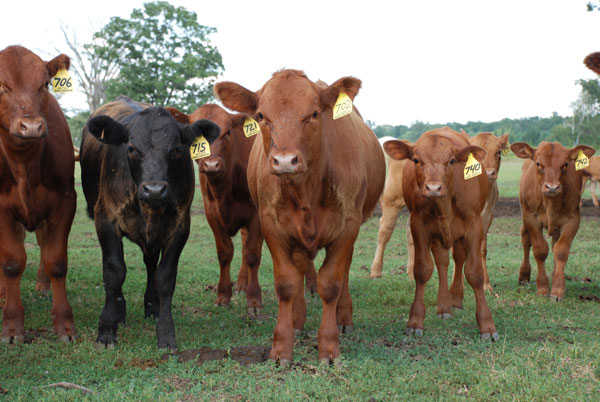October 15, 2020

COVID-19 disrupted supply chains and emptied store shelves. Meat products were among the products disappearing from shelves, in part because workers in meat processing plants were becoming sick with COVID-19 and unable to work, forcing plants to close. Restaurants closed or went to take-out only and schools closed, reducing demand.
In an article, "Beef Cattle Markets and COVID‐19," in Applied Economic Perspectives & Policy, Charles C. Martinez, Joshua G. Maples and Justin Benavidez explore the impact of the pandemic across all sectors of the cattle industry. Martinez is an assistant professor and Extension economist in the Department of Agricultural Resource and Economics at the University of Tennessee. Maples is an assistant professor and Extension economist in the Department of Agricultural Economics at Mississippi State University. Benavidez is an assistant professor and Extension economist in the Department of Agricultural Economics at Texas A&M University.
“COVID-19 disrupted not only the cattle industry but just about every market," Martinez said. "When analyzing the cattle industry, COVID-19 has really showed the importance of having a risk strategy, regardless of size or sector.”
Here's a look by sector of the cattle industry.
Cow-calf producers
The outlook for returns to cow-calf producers was bright entering 2020. The 2020 USDA Livestock Outlook report forecasted average 2020 feeder cattle prices of $146 per hundredweight, an increase from $142.23 per hundredweight in 2019.
However, COVID-19 disrupted those forecasts. The CME feeder cattle futures contract declined by more than 25% from the Jan. 15, 2020, price during parts of March and April. Prices hovered around 15% below Jan. 15 levels during May and June. Similar changes occurred at local auction markets.
COVID-19 has driven demand for ground beef. The price of cull cows rose from about $52 per hundredweight the first week of January to more than $65 per hundredweight through most of June. This is greater than historic percentage changes, the authors wrote.
Cow-calf producers are expected to continue to feel the effects of COVID-19 into 2021.
Stocker and backgrounding producers
The overall effect of COVID‐19 on the stocker and backgrounding sector was defined by more than just the price decline. As both the cash price and futures price began to plummet, the sellers of feeder calves were left with two options, sell or hold on and see if prices turn upward.
Feeder calf sales declined in response to lower prices, with sales of feeder calves in March 2002 about 47% below March 2019. As prices began to increase in the cash market, transactions began to increase, which brought April's total number sold back within range of recent years. Additionally, as a direct result of the deferred sales in late spring, the number of head sold in May and June of 2020 were higher than 2019.
At multiple points in April, the June live cattle futures contract was more than 30% lower than it was on Jan. 15, 2020.
Feedlot producers
As a result of the beef herd increasing for five consecutive years, there was a large number of cattle in feedlots at the beginning of 2020. The 2020 USDA Outlook for live was $117 per hundredweight, which was essentially the same as the average price in 2019.
Cattle slaughter totals dropped sharply throughout April and bottomed out at a weekly total of approximately 438,000 at the start of May, 35% lower than the same week in 2019. Cattle slaughter volume increased and recovered, but remained below 2019 levels in May and June. In total, about 1.2 million fewer head of cattle were processed in April through June 2020 than during the same period in 2019.
As producers held cattle longer, weights increased. The average steer carcass weight has hovered around 895 pounds since March, which is 20–40 pounds heavier than 2019 levels at the same time. While slaughter totals recovered back to 2019 levels near the end of June due in part to increased processing on Saturdays, a backlog of market ready cattle remained in feedlots.
In total, the COVID‐19 effect on the feedlot sector was an unprecedented shock at all levels of their operations.
“Each sector incurred different impacts. The most notable, and most publicized result was the backlog of fed cattle nationally," Martinez said. "The backlog resulted in numerous chain reactions in the supply chain.”
Questions remain about the demand for beef:
"Will at‐home consumption remain the norm even upon full reopening?" the authors ask. "Will willingness to pay for meals prepared outside the home decrease?"
Source: AAEA, AEPP
Read more about:
Covid 19About the Author(s)
You May Also Like




